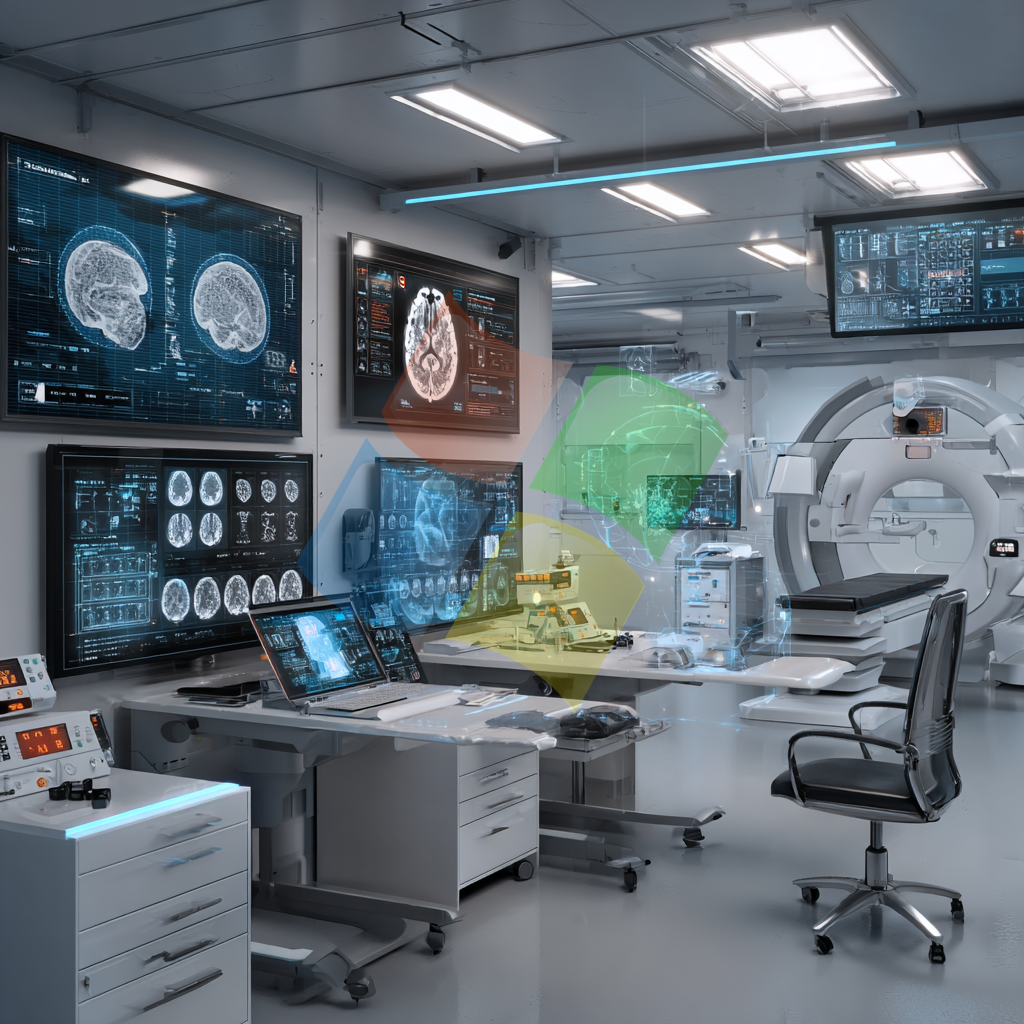A decisive advance in diagnostic assistance
Microsoft has just unveiled an artificial intelligence system that outperforms humans in complex medical diagnostic cases. According to a comparative study conducted on thousands of clinical scenarios, this AI would be up to four times more accurate than general practitioners in certain rare or difficult-to-identify situations1.
This system is in line with the advanced multimodal models developed by Microsoft Research, combining textual analysis, visual analysis (radiology) and patient history. Unlike tools such as GPT-4 or Med-PaLM, Microsoft’s AI has been specifically trained on clinical corpora, real cases and data from hospital partnerships.
AI trained for complex diagnostics
The model has been trained on a massive volume of medical data, including millions of imaging reports, pathological diagnoses, hospitalization records and patient-physician exchanges. Thanks to the integration of different types of data (multimodality), the AI is able to :
- Cross-reference symptoms with history,
- Detect rare pathologies from subtle clues,
- Suggest differential hypotheses and relevant additional tests.
According to Microsoft, in 84% of the complex cases tested, the system proposed the correct diagnosis on the first suggestion, compared with 21% for a panel of experienced doctors.2.
Real-life hospital use cases
Microsoft’s AI is currently being tested in partnership with several hospitals in Europe and the USA, in specialties where diagnostic error remains high or treatment times critical. Concrete applications include
- Pediatric emergencies: early detection of rare metabolic diseases in infants, reducing diagnosis time by 60%.
- Thoracic radiology: identification of pulmonary embolism or precancerous lesions on complex scans, with 30% greater accuracy.
- Neurology: brain MRI interpretation combined with textual history analysis to refine diagnoses of degenerative diseases.
- Augmented general practice: help prioritize examinations, reduce misdiagnoses and improve prescription quality.
Transforming the role of the doctor?
With the arrival of this new-generation medical AI, the doctor’s job is not disappearing, but changing profoundly. AI becomes a diagnostic co-pilot, capable of filtering hypotheses, alerting to inconsistencies or suggesting more precise directions.
Physicians remain the only ones to interpret the human context, make the final clinical judgment and interact with the patient. But their role is becoming more strategic: validating algorithmic recommendations, explaining diagnoses, arbitrating in cases of uncertainty or conflict between AI and clinical intuition.
What medical skills in the age of AI?
The growing power of these tools is forcing a transformation of medical curricula and practices. Among the new skills expected :
- Critical reading of algorithmic reasoning,
- Verification of traceability and robustness of recommendations,
- Ability to interact with generative AIs in natural language,
- Training in assisted care ethics,
- Mastering AI systems integrated into patient records.
According to the WHO, 72% of hospitals in G20 countries plan to integrate one or more AI modules in the next five years3.
For responsible, explainable and regulated medical AI
This performance should not mask the ethical challenges. Microsoft assures that its system has been designed to comply with current regulatory frameworks, including the RGPD and future European AI Act standards. AI records every stage of its reasoning, offers justifications for its choices and enables the user to trace the source of recommendations.
Safeguards have been built in to prevent abuses:
- in the event of major uncertainty,
- the need for human medical supervision,
- documentation of potential model biases.
This approach underlines the fact that tomorrow’s challenge is not so much raw precision as clinical trust between professionals and intelligent systems.
Augmented medicine… but not automated medicine
The promise of this AI is not to replace doctors, but to offer them an ultra-high-performance tool to better treat the most delicate cases. In a context of staff shortages, overcrowded emergency departments and increasingly complex diagnoses, AI can become a vector of efficiency and safety.
But this promise will only become reality if training, transparency and regulation follow. AI won’t heal the healthcare system on its own – but properly integrated, it can become its engine for faster, fairer and more humane medicine.
References
1. Microsoft Research. (2025). Advancing AI-Assisted Medical Diagnostics.
http://www.microsoft.com/en-us/research/publication/ai-in-diagnosis
2. Stanford HAI. (2025). Benchmarking AI and Clinicians on Complex Diagnostic Cases.
http://www.hai.stanford.edu/research/reports/diagnostic-ai-study
3. World Health Organization. (2024). AI and the Future of Health Systems.
http://www.who.int/publications/i/item/ai-healthcare-2024

